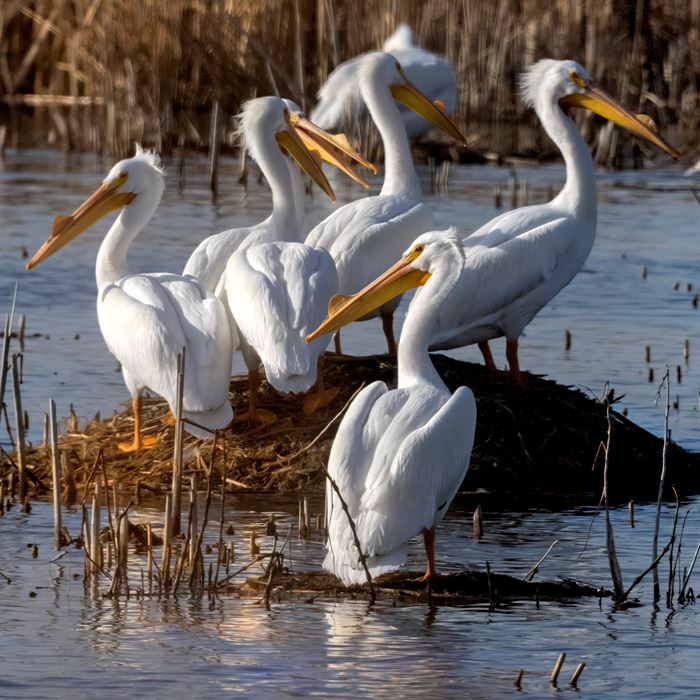Wintering the Marsh Path

By Karen Menard
The beauty of winter is sometimes best experienced immersed among the life in the marsh—Howard Marsh, that is. And, now there is currently more room for both wildlife and visitors with the additional 203 acre coastal wetland restoration project opened last year in the adjacent, western “Phase 2” addition across Howard Rd.
This site not only provides visitors another 2.5 miles of trails, but also offers more quality habitat for wildlife. The wetland dike construction portion of the project helps to enhance water quality, restoring hydrology and effectively holding water.
Wildlife most recently seen taking advantage of this new site’s amenities include not commonly seen, short-eared owls. Considered nomads of the bird world, short-eareds are skilled in moving around to areas with large numbers of prey during the winter months. These animals are using the tops of the wetland dikes for hunting and perching.
Additionally, migrating flocks of tundra swans and overwintering flocks of trumpeter swans can also be easily viewed here during the winter season. Tundra swans migrate from their breeding grounds in the high arctic. While stopping over at Howard Marsh, they feed mostly on the underwater remains of aquatic plants, arthropods, waste grain, and,—usually, whatever is most available, depending on weather and water conditions. Other migrating birds from the north spied here include snow buntings, northern harriers, and American tree sparrows. Mallards, gadwalls, and pintails are a few of the duck species also found among the wintry landscape most recently.
Since it was opened last year, both birds and birders alike have flocked to the adjacent area, with birds utilizing it for sustenance and roosting opportunities. Some of the species found there during the opening season include white pelicans, sandhill cranes, black-necked stilts, green and blue-winged teal, common terns, ospreys, red-necked phalaropes, kingfishers, snowy egrets and bald eagles. These animals all made their presence known while in the water hunting for fish, probing around for macroinvertebrates, or spending time safely resting en route to other destinations.
The bird response to the habitat restoration of this former agricultural site completed within less than two years ago, continues to amaze as the seasons move forward. Given that it is an important extension of already valuable habitat established next door, it’s really not too surprising that the bird populations are as diverse as they are.
Even though the thought of venturing out near the Lake Erie coast in the winter might send us thoughts of chilly winds--the sights and sounds of the interesting bird life against the snow, ice and open water is worth the trip. Consider taking a hike along a path at Howard Marsh for a wintry experience in nature. And, don’t forget to pack your binoculars—a magestic bald eagle may likely make an appearance.